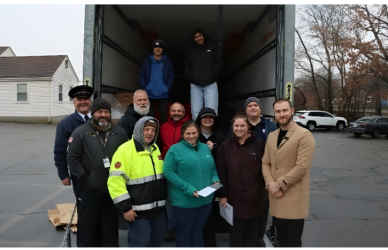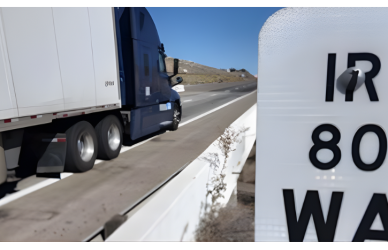As concerns about highway safety continue to grow, states are taking proactive measures to protect all road users. Sixteen states already include all drivers in their move-over laws, and more are following suit. Maryland led the charge one year ago, with Arizona, Connecticut, Illinois, Iowa, Oklahoma, Oregon, Pennsylvania, and Tennessee quickly following suit.
This year, seven more states have joined the movement and adopted similar move-over rule changes. With the momentum building, many expect the list of states to expand even further in the near future.
Here’s what you need to know.
Colorado
As of this year, Colorado has taken the lead in expanding the state’s move-over rule to protect a wider range of stationary vehicles. The law requires drivers to move over one lane when approaching or passing stationary emergency vehicles, tow trucks, public utility service vehicles, or vehicles being equipped with tire chains. If moving over is not possible, drivers should reduce and maintain a speed of 20 mph below the posted speed limit.
Governor Jared Polis has signed HB1123, adding stationary vehicles giving a hazard signal to the list of those protected by the law. Failure to comply could result in a careless driving offense and a minimum $150 fine or at least 10 days in jail. According to a fiscal note, over the past three years, 230 people were sentenced for violating this law.
“Motorists who fail to comply with this law, paired with common driving distractions, create a dangerous and sometimes deadly combination on Colorado’s roadways,” reads the Colorado State Patrol website.
The updated rule will go into effect in August.
Florida
Florida is expanding its move-over rule to provide better protection for drivers of disabled vehicles. Previously limited to first responders and towing vehicles, the rule now requires all drivers to slow down or move over when they see a vehicle on the side of the road with hazard lights, flares, or emergency signage.
The new law goes into effect on July 1; however, enforcement won’t begin until January 1. Fines for violators can reach up to $158.
Indiana
Indiana’s move-over rule now covers a wider range of protected road users thanks to the passing of HB1050. The new law adds disabled stationary vehicles with flashing hazard warning signals to the list of those afforded protection.
Violators who fail to move over or yield face fines up to $1,000. Additionally, jail time is possible if an emergency worker is injured or killed due to a driver’s noncompliance.
The amendment takes effect July 1.
Minnesota
Minnesota’s omnibus transportation bill, currently signed into law, has introduced a revised move-over law set to take effect on July 1st. This law extends to all vehicles stopped on the roadside with flashing lights, including ambulances, fire trucks, law enforcement, construction and maintenance vehicles, and tow trucks.
The new update, which is included in HF2887, emphasizes the importance of moving over for any stopped vehicle with flashing lights. Even if the lights aren’t flashing, drivers must still move over if a person is present outside the vehicle on a highway with two lanes in the same direction.
Montana
Montana has taken a step forward to improve road safety with a new move-over rule. Under the revised statute, emergency vehicles, police vehicles, and tow trucks with flashing or rotating amber, blue, red, or green lights or temporary signs must be given a wide berth by road users. The list of protected vehicles has now been extended to include highway maintenance and utility vehicles with similar lighting or signs.
Although this measure is expected to improve the safety of workers performing critical jobs on the side of the road, the amendments did not go as far as other states. The original Bill included broader protection for “other vehicles,” which would have covered cars and trucks.
The updated law will come into effect on October 1.
North Carolina
North Carolina’s move-over law shields law enforcement, emergency and utility workers. Any travelers who fail to abide by this law might be fined up to $250.
Recently, the Senate voted to extend this protection to any parked vehicle displaying caution signals, including road flares and hazard lights. This legislation, SB638, is currently awaiting consideration in the House.
North Dakota
Starting August 1st, drivers in North Dakota must abide by a new move-over rule. This state law mandates that drivers move to an adjacent lane or reduce their speed to a safe level when passing emergency vehicles or transportation department vehicles with flashing lights activated. However, exceptions are allowed if safety, road, weather, and/or traffic conditions do not allow.
Representative Austen Schauer, R-West Fargo, expressed that many drivers are confused about which types of vehicles qualify for this new protection. Schauer explained that while a school bus, motor coach, tractor-trailer, or family vehicle are not covered under the move-over rule, it is expected that drivers will reduce their speed or move over for any vehicle on the side of the highway with hazard lights activated. Unfortunately, some drivers do not comply with this expectation, and this has prompted the legislature to implement a new rule to safeguard the lives of all drivers on the state’s fastest roadways.
HB1141 has been approved by the legislature and will be enforced shortly. This rule requires drivers approaching a vehicle displaying flashing hazard warning signals on a highway outside the limits of a city to move over or slow down while maintaining a safe speed for the road conditions. Those who violate the new rule will face a fine of $20.
Tennessee
Effective July 1, Tennessee has implemented a new rule to protect first responders as well as highway maintenance and utility vehicles using emergency signals. Travelers are required by state law to move over or reduce speed for these affected vehicles, and violators may face costly fines ranging from $100 to $500.
The passage of HB92 expands the law’s protection to include any disabled vehicle with hazard lights activated. However, first-time violators of the rule would only face a fine of up to $250, while subsequent violations could result in escalating fine amounts of up to $2,500.
According to the Tennessee Department of Safety, there have been an average of 1,585 convictions annually for the offenses now covered under the new rule since 2018.
Virginia
To ensure the safety of emergency vehicles and now any highway user displaying hazard lights, caution signs, and road flares, travelers on roadways with at least two lanes in one direction must proceed with caution and consider yielding the right of way by making a safe lane change. If a lane change is not possible, drivers must use due caution and maintain a safe speed.
This updated law, effective July 1, prioritizes safety for all highway users. Senate Transportation Committee Chairman Sen. David Marsden, D-Burke, emphasized its significance in protecting those alongside the roadway.
Source: Land Line











